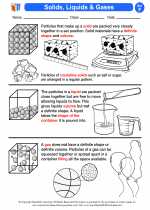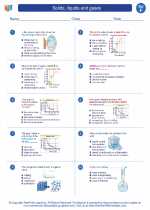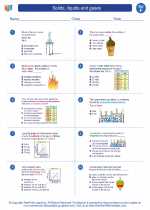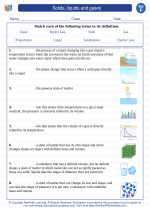Solids, liquids and gases -> plasma
Plasma: The Fourth State of Matter
Plasma is often referred to as the fourth state of matter, alongside solid, liquid, and gas. Unlike the other three states, plasma does not have a fixed shape or volume, and it is made up of charged particles, such as ions and electrons.
Characteristics of Plasma:
- Electrically Charged: Plasma contains charged particles, which makes it conductive and responsive to electromagnetic forces.
- High Energy: Plasma particles have high kinetic energy, allowing them to move freely and independently of each other.
- Visible Light: Many plasmas emit light, and are commonly seen in phenomena such as flames, lightning, and the auroras.
- Abundance in the Universe: Plasma is the most common state of matter in the universe, comprising stars, solar wind, and interstellar space.
Examples of Plasma:
Some common examples of plasma include:
- The Sun: The Sun is a massive ball of plasma, where nuclear fusion reactions produce immense amounts of energy.
- Lightning: The electrical discharge during a lightning strike creates a plasma channel through the air.
- Fluorescent Lights: The glowing light in a fluorescent tube is produced by a plasma created within the tube.
Applications of Plasma:
Plasma has a wide range of practical applications, including:
- Plasma Cutting: Using a high-temperature plasma arc to cut through conductive materials like steel.
- Plasma TVs: Flat-panel displays that use ionized gases to produce images.
- Fusion Research: Scientists are studying plasma as a potential fuel for nuclear fusion, which could provide a clean and abundant source of energy.
Study Guide:
To study plasma, consider focusing on the following key points:
- The characteristics and behavior of plasma particles.
- The differences between plasma and the other states of matter.
- Examples of natural and human-made plasmas.
- The practical applications and significance of plasma in various fields.
Understanding the unique properties and widespread presence of plasma is essential for gaining insights into the fundamental processes of the universe and the potential technological advancements it offers.
.◂Science Worksheets and Study Guides Sixth Grade. Solids, liquids and gases
Study Guide Solids, liquids and gases
Solids, liquids and gases  Activity Lesson
Activity Lesson Solids, Liquids & Gases
Solids, Liquids & Gases  Worksheet/Answer key
Worksheet/Answer key Solids, liquids and gases
Solids, liquids and gases  Worksheet/Answer key
Worksheet/Answer key Solids, liquids and gases
Solids, liquids and gases  Worksheet/Answer key
Worksheet/Answer key Solids, liquids and gases
Solids, liquids and gases  Vocabulary/Answer key
Vocabulary/Answer key Solids, liquids and gases
Solids, liquids and gases  Vocabulary/Answer key
Vocabulary/Answer key Solids, liquids and gases
Solids, liquids and gases 

 Activity Lesson
Activity Lesson
 Worksheet/Answer key
Worksheet/Answer key
 Worksheet/Answer key
Worksheet/Answer key
 Worksheet/Answer key
Worksheet/Answer key
 Vocabulary/Answer key
Vocabulary/Answer key
 Vocabulary/Answer key
Vocabulary/Answer key

The resources above cover the following skills:
PHYSICAL SCIENCE
Energy
Students who demonstrate understanding can:
Plan an investigation to determine the relationships among the energy transferred, the type of matter, the mass, and the change in the average kinetic energy of the particles as measured by the temperature of the sample.